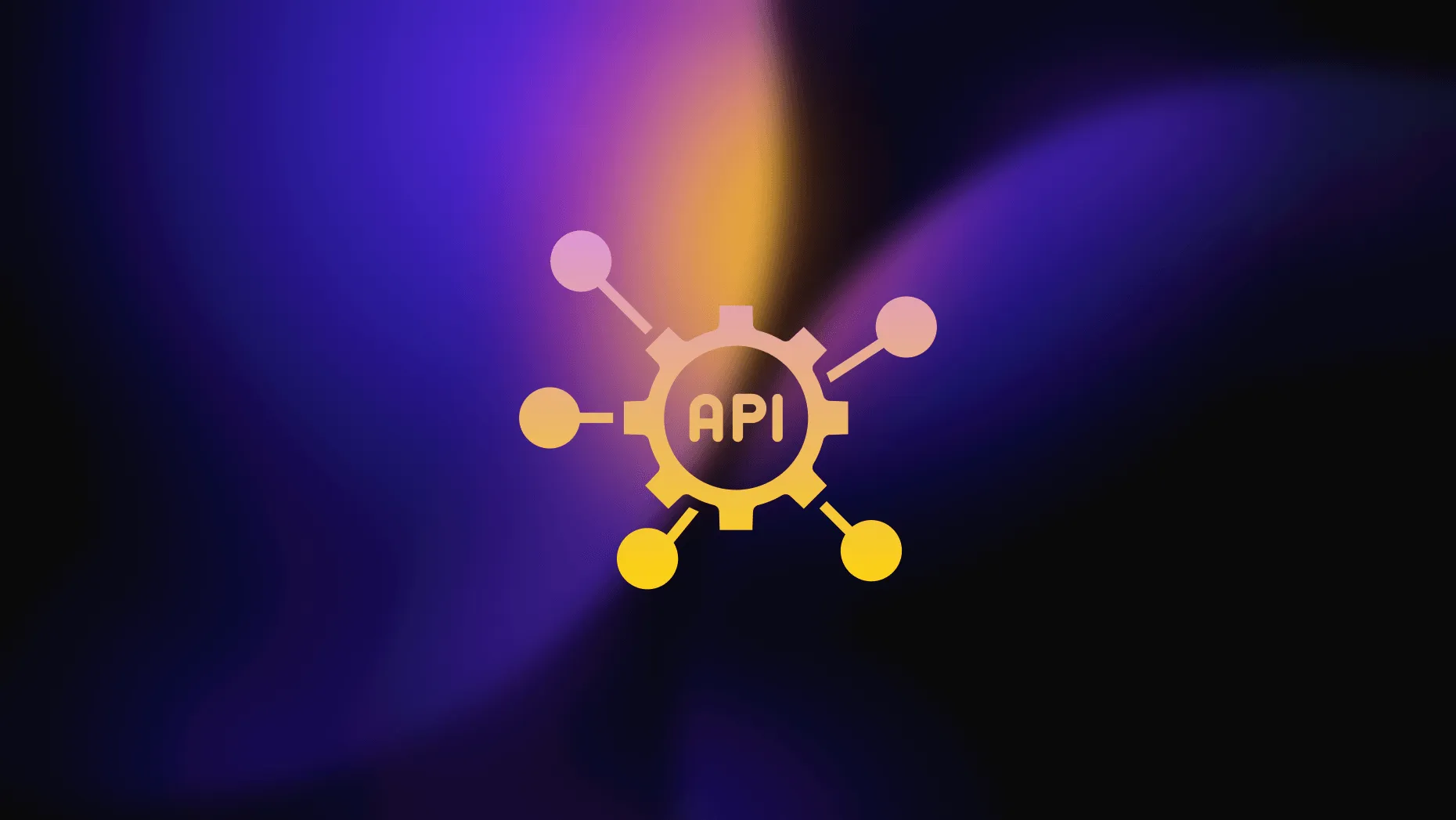

Updated:
May 13, 2025
Published:
March 8, 2024
Understanding API Programming: A Beginner's Guide
API programming is an important part of software development. APIs, short for Application Programming Interfaces, are like bridges that enable different programs to “talk” to each other and exchange data. They're particularly useful when you want different applications to work together.
API programming overview:
APIs enable developers to access predefined functions and data without knowing the internal structure or implementation of the respective software components.
Importance in modern software development:
API programming is a central part of modern software development. It makes it possible to connect various services and applications, which improves collaboration among developers and speeds up the development process. APIs make functions reusable and support modularity from software. This results in more flexible and scalable systems.
API (Application Programming Interface):
An API is a collection of protocols that provide access to the functionalities of a software product. It determines how certain software components should interact and which data can be exchanged. APIs can exist at various levels, from operating systems to libraries to web services.
Basics of API programming
API programming is the creation of interfaces that enable applications to communicate with each other. Key components include commands, functions, protocols, and objects
API programming is a crucial aspect of software development, which makes it possible to connect and interact with different software components.
Key components of API programming
- Endpoints: These are special addresses (URLs or URIs) that allow you to access functions or data of an API. For example, an endpoint in an online store could provide details about a product.
- HTTP methods: These methods (GET, POST, PUT, DELETE) are used to communicate with the API to retrieve, create, change, or delete data. GET fetches data, for example, while POST creates new data.
- Data formats (payloads): Information is exchanged in formats such as JSON or XML to ensure that data is transferred and interpreted correctly between different applications.
- Authentication and Authorization: Security methods such as API keys, OAuth tokens, or other authentication and authorization methods are used to control access to API functions.
Overview of API Interfaces
API interfaces provide a standardized way for various software components to communicate with each other. To program your own API, there are various types of API interfaces, including:
- RESTful APIs:These use the principles of Representational State Transfer (REST) and use HTTP methods to address resources. RESTful APIs are widely used and are considered easy to understand and implement.
- SOAP (Simple Object Access Protocol): A protocol-based API that uses XML as a data format. SOAP APIs are particularly common in enterprise environments.
- GraphQL: A flexible query language for APIs that allows clients to retrieve exactly the data they need. In contrast to REST, GraphQL provides more granular control over the retrieved data.
Types of APIs
There are various types of APIs, including the widely used REST API. It has a clear structure and is easy to use. In addition to REST APIs, there are others such as SOAP and GraphQL, each with their own strengths and use cases.
REST API (Representational State Transfer):
REST is an architectural style for developing network-based applications. A REST API enables communication between different systems using the HTTP protocol. It is based on the principle of representing resources and statelessness.
REST API interface:
A REST API interface defines the endpoints that can be used to retrieve or manipulate resources. HTTP methods such as GET, POST, PUT, and DELETE are often used. The data is often transferred in JSON or XML format.
Other types of APIs:
SOAP (Simple Object Access Protocol):
SOAP is a communication protocol for exchanging information between applications. It is more complex than REST and can communicate via various network paths, making it attractive for large companies.
GraphQL:
GraphQL is a language that allows you to request specific data. There is only a single access point, which makes data retrieval more efficient and prevents unnecessary data loading.
JSON-RPC and XML-RPC:
JSON-RPC and XML-RPC are protocols that allow functions to be executed on another computer on the network. JSON-RPC uses the lightweight JSON format, while XML-RPC uses XML.
WebSocket:
WebSockets create a permanent connection for direct exchange between a user and a server. This is ideal for real-time communication, such as live chats or games.
Each of these API types has its own strengths and is chosen based on the needs of the project and the developer's preferences.
How does an API work?
An API defines the interface via which applications can interact with each other. This is done by exchanging defined data formats and structures. APIs make it easy to integrate disparate systems and make it possible to share functions or data between applications without the user having direct contact with the internal implementation.
API connection:
The API connection defines how requests can be sent and responses received. It can use RESTful (Representational State Transfer), SOAP (Simple Object Access Protocol), or other protocols to structure data transfer.
This can be done in a variety of ways, but an API is usually provided via network access. The connection can be made both locally within a system and via the Internet.
API access (API access):
Authentication mechanisms such as API keys or OAuth tokens are used to secure access to an API data flow. This ensures that only authorized users or applications have access and protects sensitive data and functions from unauthorized access.
Examples and use cases
Twitter API (RESTful API): It allows developers to access Twitter data and integrate it into their applications.
Amazon Web Services (AWS) (SOAP API): Offers various cloud services that enable automated management of cloud resources via an external application.
GitHub (GraphQL API): Enables you to search specifically for specific data instead of receiving extensive data. This enables efficient data retrieval in applications with specific requirements.
Bitcoin (JSON-RPC API): Forms the basis for interacting with a Bitcoin blockchain.
Success stories:
Salesforce: Salesforce provides APIs for seamless integration of CRM features. Companies like Spotify use Salesforce APIs to effectively manage customer data.
Stripe: Stripe offers payment APIs and has helped streamline the payment process for businesses. By integrating Stripe, the Shopify company was able to offer its customers a seamless payment service.
Netflix: Netflix uses APIs to personalize content. By integrating APIs, users can get personalized recommendations based on their viewing behavior.
Google Maps: Developers use the Google Maps API to integrate maps and location data into applications. For example, delivery services can also show their customers where their order is.
Development and programming of APIs
API development best practices:
Clear interfaces: The API interfaces should be clear and understandable to make it easy for developers to use.
Versioning: APIs should be versioned to ensure backward compatibility and make changes transparent.
Safety: Implementation of security mechanisms such as OAuth for authentication and TLS for encrypted communication.
Testing: Extensive testing, including unit and integration testing, to identify errors early on and ensure the reliability of the API.
documentation: Comprehensive and easy-to-understand documentation that covers examples, use cases, and error handling.
Developing APIs therefore requires not only technical expertise, but also an understanding of user needs and the ability to design flexible and robust interfaces.
Importance of API programming:
APIs give developers access to existing features without having to understand or own the entire source code. This promotes collaboration, accelerates development, lowers Development costs and enables the integration of various software components into more comprehensive applications. APIs play a critical role in the development of web-based services, mobile applications, cloud computing, and many other technologies.
The benefits of API interface programming are manifold, from accelerated development to improved maintainability to the creation of open ecosystems that can be used by developers worldwide.
Future prospects of API development:
Automate and integrate AI:
The automation of API development will continue to increase, using artificial intelligence to build more efficient APIs and minimize errors.
Overall, API development will remain a dynamic and evolving area, as it is essential for the seamless integration of software components in an increasingly connected world. Developers will strive to build flexible, secure, and high-performance APIs to meet the needs of modern applications.
Overall, APIs are essential in modern software development and offer a wide range of applications. The future prospects of API development are promising.


Zwischen Agenturalltag und Startup - unser Blog
In unserem Blog teilen wir Tipps rund um das Thema Appentwicklung, Startups und einige verrückte Geschichten aus unserem Agenturalltag mit euch.
Book yours free Video call
Do you want to talk to our team about your project and just hear what we could do for you? Then simply book a free video call with us now!







.gif)
